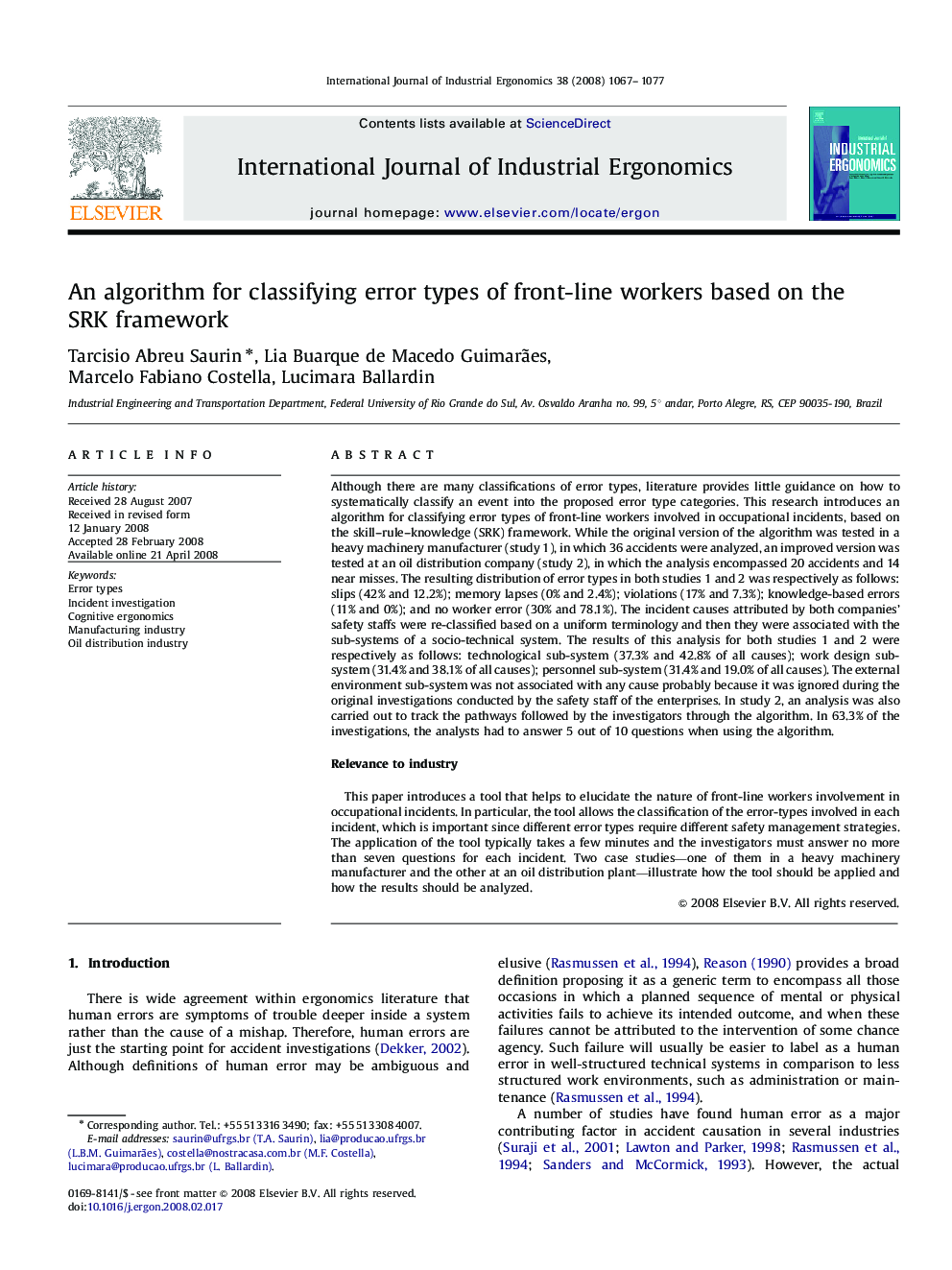| کد مقاله | کد نشریه | سال انتشار | مقاله انگلیسی | نسخه تمام متن |
|---|---|---|---|---|
| 1096680 | 1487467 | 2008 | 11 صفحه PDF | دانلود رایگان |

Although there are many classifications of error types, literature provides little guidance on how to systematically classify an event into the proposed error type categories. This research introduces an algorithm for classifying error types of front-line workers involved in occupational incidents, based on the skill–rule–knowledge (SRK) framework. While the original version of the algorithm was tested in a heavy machinery manufacturer (study 1), in which 36 accidents were analyzed, an improved version was tested at an oil distribution company (study 2), in which the analysis encompassed 20 accidents and 14 near misses. The resulting distribution of error types in both studies 1 and 2 was respectively as follows: slips (42% and 12.2%); memory lapses (0% and 2.4%); violations (17% and 7.3%); knowledge-based errors (11% and 0%); and no worker error (30% and 78.1%). The incident causes attributed by both companies’ safety staffs were re-classified based on a uniform terminology and then they were associated with the sub-systems of a socio-technical system. The results of this analysis for both studies 1 and 2 were respectively as follows: technological sub-system (37.3% and 42.8% of all causes); work design sub-system (31.4% and 38.1% of all causes); personnel sub-system (31.4% and 19.0% of all causes). The external environment sub-system was not associated with any cause probably because it was ignored during the original investigations conducted by the safety staff of the enterprises. In study 2, an analysis was also carried out to track the pathways followed by the investigators through the algorithm. In 63.3% of the investigations, the analysts had to answer 5 out of 10 questions when using the algorithm.Relevance to industryThis paper introduces a tool that helps to elucidate the nature of front-line workers involvement in occupational incidents. In particular, the tool allows the classification of the error-types involved in each incident, which is important since different error types require different safety management strategies. The application of the tool typically takes a few minutes and the investigators must answer no more than seven questions for each incident. Two case studies—one of them in a heavy machinery manufacturer and the other at an oil distribution plant—illustrate how the tool should be applied and how the results should be analyzed.
Journal: International Journal of Industrial Ergonomics - Volume 38, Issues 11–12, November–December 2008, Pages 1067–1077